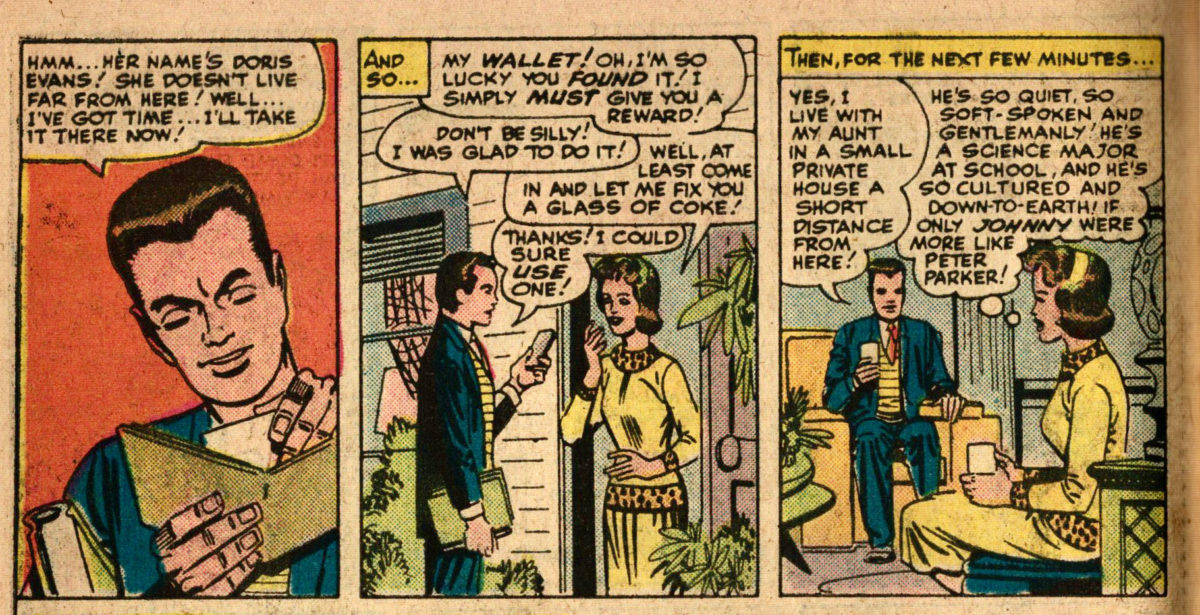Featuring: Iron Man
Release: February 11, 1965
Cover: May 1965
12 cents
Story by Marvel’s merriest marcher: Stan Lee
Art by Marvel’s most amiable artist: Don Heck
Inking by Marvel’s dizziest delineator: Mickey Demeo
Lettering by Marvel’s persnippiest pen-pusher: Sam Rosen
12 pages
| Previous | Next | |
|---|---|---|
| Young Men #27, Story B | Prelude | |
| Sgt. Fury #16 | Reading order | Tales of Suspense #65, Story B |
| Tales of Suspense #64, Story B | Tales of Suspense | Tales of Suspense #65, Story B |

We just spent several weeks reading Red Skull stories to prepare for this, and it’s an Iron Man story. What gives.
But I see Red Skull on the cover. Ah, flipping ahead, there are two stories in this comic. The second story is about Captain America and the Red Skull. Maybe we’ll get there tomorrow.

There’s a new name in the credits. Who is Mickey Demeo? Well, his real Name is Mike Esposito. He’s been working in comics since leaving the army in the late 1940s, and is best known for his decades of collaboration with Ross Andru. I know him best as an inker, but he was often the main penciller on his earlier work. He and Ross Andru started small publishers together in the 1950s, including Mikeross Publications, and MR Publications, which published Mr. Universe. Esposito and Ross had a decade-long collaboration on the character of Wonder Woman, which helped give a definitive and iconic look to the character. Together with writer Bob Kanigher, they co-created the original Suicide Squad and the Metal Men. Esposito will become a significant inker on Amazing Spider-Man, for a time in collaboration with Andru.
Why the alias? He probably doesn’t want DC to know he’s doing Marvel work. And it’s not just this title. He’s also inking this month’s Human Torch and Avengers adventures.
Here is a sampling of some early pencil work by Esposito.
- Men’s Adventures #6 (Marvel, 1951)
- Weird Adventures #3 (PL Publishing, 1951)
- Girl Comics #8 (Marvel, 1951)
- Blazing Sixguns #15 (Super Comics, 1963)
And here is some of his inking work in collaboration with Ross Andru.
- Mr. Universe #2 (MR Publications, 1951)
- All-American Men of War #6 (DC, 1953)
- Get Lost #1 (Mikeross Publications, 1954)
- Wonder Woman #58 (DC, 1958)
- Brave and the Bold #25 (DC, 1959)
- Showcase #37 (DC, 1962)
On to Iron Man. In this issue, Iron Man fights Iron Man!
Really, the new Iron man fights the old Iron Man.
That is, somebody steals Tony Stark’s new armor. So Tony has to put on his old armor to fight him.
Continue reading “Tales of Suspense #65”














































